预约演示
更新于:2025-08-07
Eleutheroside B(Changchun University of Chinese Medicine)
更新于:2025-08-07
概要
基本信息
结构/序列
分子式C17H24O9 |
InChIKeyQJVXKWHHAMZTBY-GCPOEHJPSA-N |
CAS号118-34-3 |
关联
100 项与 Eleutheroside B(Changchun University of Chinese Medicine) 相关的临床结果
登录后查看更多信息
100 项与 Eleutheroside B(Changchun University of Chinese Medicine) 相关的转化医学
登录后查看更多信息
100 项与 Eleutheroside B(Changchun University of Chinese Medicine) 相关的专利(医药)
登录后查看更多信息
1,724
项与 Eleutheroside B(Changchun University of Chinese Medicine) 相关的文献(医药)2025-10-01·JOURNAL OF PHARMACEUTICAL AND BIOMEDICAL ANALYSIS
Investigation of the material basis and mechanism of Qingfei Paidu granules in treating LPS-induced acute pneumonia using UPLC-Q-TOF-MS/MS, network pharmacology, molecular docking and experimental verification
Article
作者: Zhao, Hao ; Wang, Xing ; Guo, Qiang ; Ma, Ruonan ; Zhang, Yuxin ; Wu, Xia ; Li, Huizhen ; Ma, Yuqing
Qingfei Paidu granules (QFPDG), derived from four classic traditional Chinese medicine formulas with a centuries-long history of treating respiratory disorders, have shown remarkable clinical efficacy against pneumonia and lung injury, yet their pharmacodynamic components and mechanisms require further elucidation. In this work, UPLC-Q-TOF-MS/MS was used to identify the chemical constituents in QFPDG, drug-containing serum, and lung tissue. Network pharmacology was employed to predict key targets and pathways. The anti-pneumonia efficacy was evaluated via an LPS-induced acute pneumonia mouse model and by measuring cytokine levels in LPS-stimulated RAW264.7 cells. Finally, Molecular docking along with molecular dynamics simulation was conducted to explore the interactions between key compounds and targets. Results showed that 145 compounds were identified in QFPDG solution, 94 in serum, and 83 in lung tissue, with 97 components in serum and lung associated with 350 pneumonia-related targets and crucial pathways. QFPDG alleviated acute lung injury and inflammation in LPS-induced acute pneumonia mice, reducing monocyte, neutrophil, lymphocyte, and leukocyte counts in bronchoalveolar lavage fluid (BALF), as well as decreasing TNF-α and IL-1β levels. Molecular docking and molecular dynamics simulations showed that five key components in QFPDG had strong binding affinities for TNF-α, IL-1β, IL-6 and AKT1 with minimal fluctuations at equilibrium. Binding free energy calculations indicated that the ∆Gbind values ranging from -8.59 to -41.98 kcal/mol, primarily driven by hydrophobic and electrostatic interactions, involving key amino acid residues like Glu93, Tyr97, Tyr119, Gly121, and Tyr151. In summary, QFPDG presents a multi-component, multi-target approach to treating pneumonia, targeting key signaling pathways including PI3K-AKT, MAPK, and TNF. The compound-target interactions clarify its anti-inflammatory and tissue-protective mechanisms, suggesting potential for clinical application and pharmaceutical development.
2025-09-01·FOOD CHEMISTRY
Exploring the metabolic fate of antioxidant and hypoglycemic compounds from Pistacia vera shells through in vitro simulated digestion and untargeted metabolomics
Article
作者: Di Francesco, Antonella ; Pinto, Diana ; Maccarronello, Anna Elisabetta ; Rodrigues, Francisca ; Muccilli, Vera ; Pittalà, Maria Gaetana Giovanna ; Cardullo, Nunzio
Pistacia vera L. shells (PS) are a sustainable source of health-promoting ingredients. The metabolic fate of a PS extract with antioxidant/antiradical and hypoglycemic properties prepared by microwave-assisted extraction (MAE) was investigated through in vitro gastrointestinal digestion to consider its potential value as nutraceutical ingredient. The results revealed significant changes in the phytochemical profile, bioactivity, and bioaccessibility of the extract during digestion. According to LC-ESI-LTQ-Orbitrap-MS analysis, compounds were mainly preserved in the oral (40.48 μg/mg DW) and gastric (73.67 μg/mg DW) phases, and less in the intestinal phase (13.24 μg/mg DW). α-Amylase inhibitory properties of PS extract remained consistent during digestion, whereas α-glucosidase inhibition and antioxidant/antiradical effects gradually decreased. Multivariate data analysis confirmed the interdependency between phytochemical composition and bioactivity of undigested extract and its digests. This study represents a step forward for developing PS-based functional foods, providing unique insights into the metabolism of PS bioactive constituents under simulated gastrointestinal conditions.
2025-09-01·JOURNAL OF PHARMACEUTICAL AND BIOMEDICAL ANALYSIS
Visualizing the spatial distribution of functional metabolites in the root of Codonopsis pilosula: An investigation integrating metabolomics, serum pharmacochemistry, and MALDI-MSI
Article
作者: He, Yan ; Li, Tongtong ; Wu, Xinjie ; Fan, Boyi ; Gao, Jianping ; Tong, Tong ; He, Hui ; Xu, Jinfang
Codonopsis pilosula is a traditional Chinese tonic herb commonly used as food and medicine, particularly for the treatment of spleen deficiency syndrome. However, the specific bioactive components responsible for C. pilosula effects remain unclear, and their distribution in the root of C. pilosula has not been fully elucidated due to the lack of efficient analytical techniques. In this work, we combined metabolomics with serum pharmacochemistry to investigate C. pilosula effects in a rat model of spleen deficiency syndrome. Pearson correlative analysis was applied to discover that 8 chemical compounds, including lobetyolin, atractylenolide III, syringin, luteolin, asperuloside, O-acetyl-L-serine, L-citrulline and creatine, were significantly correlated with biomarkers and considered as potential pharmacodynamic basis of C. pilosula. Furthermore, matrix-assisted laser desorption/ionization mass spectrometry imaging (MALDI-MSI) was performed to visualize the spatial distribution of the bioactive substances in the root of C. pilosula. L-citrulline was widely distributed in roots. The content of atractylenolide III and luteolin in the cortex and xylem was much higher than that in the phloem. O-Acetyl-L-serine was present in the entire phloem and a small portion of the xylem. Creatine, lobetyolin, asperuloside, and syringin were mostly distributed in the peridermal cortex, and their contents were low. By integrating metabolomics, serum pharmacochemistry and MALDI-MSI, our proposed analytical method elucidated the material basis of C. pilosula and figured out their spatial distribution in the root of C. pilosula, which provides new insights for improving the quality of medicinal herbs.
100 项与 Eleutheroside B(Changchun University of Chinese Medicine) 相关的药物交易
登录后查看更多信息
研发状态
临床结果
临床结果
适应症
分期
评价
查看全部结果
| 研究 | 分期 | 人群特征 | 评价人数 | 分组 | 结果 | 评价 | 发布日期 |
|---|
No Data | |||||||
登录后查看更多信息
转化医学
使用我们的转化医学数据加速您的研究。
登录
或
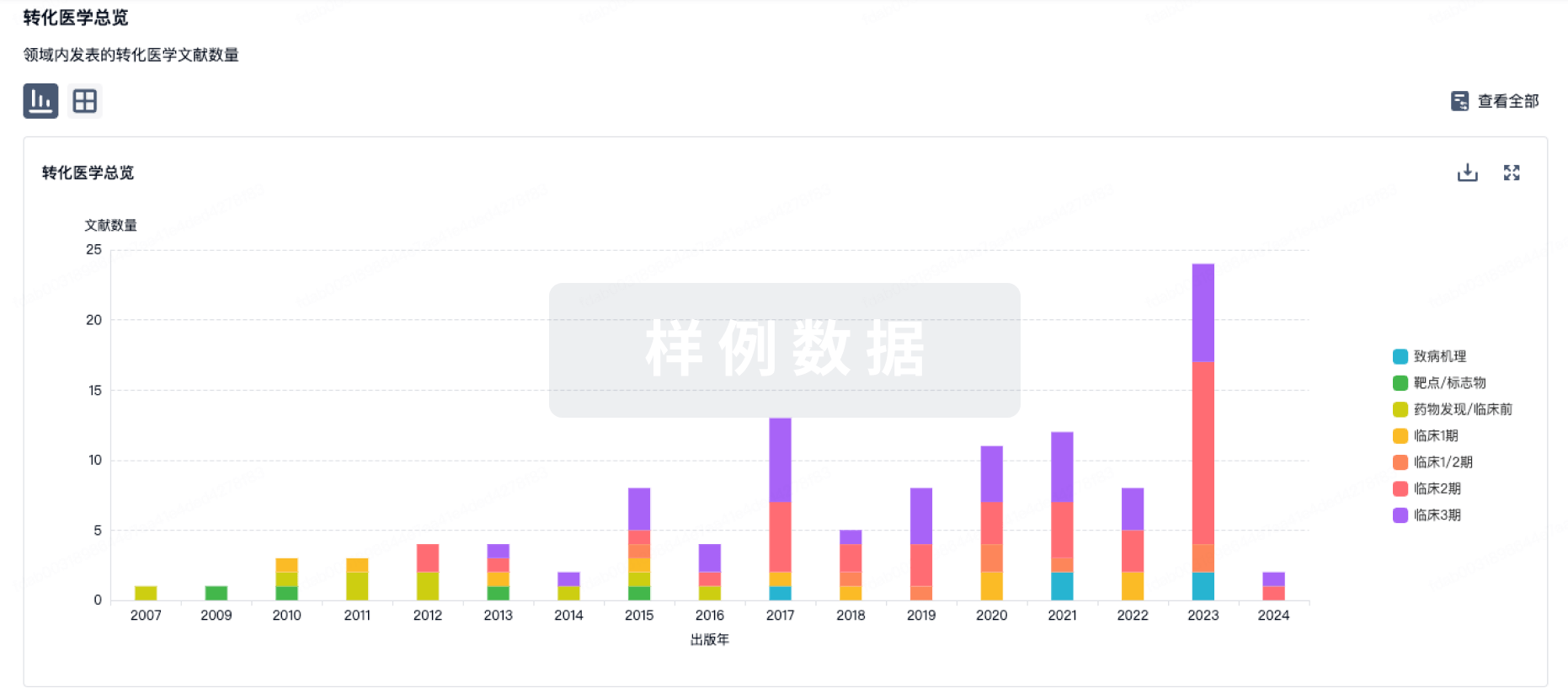
药物交易
使用我们的药物交易数据加速您的研究。
登录
或
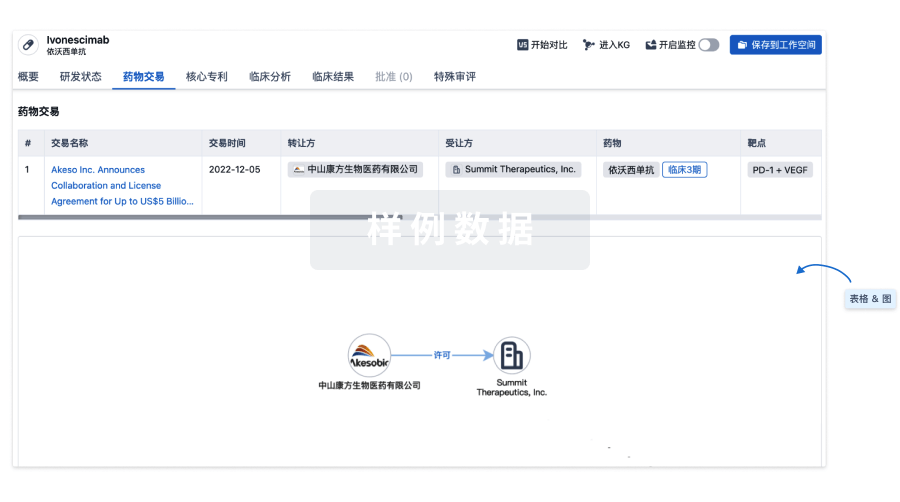
核心专利
使用我们的核心专利数据促进您的研究。
登录
或

临床分析
紧跟全球注册中心的最新临床试验。
登录
或
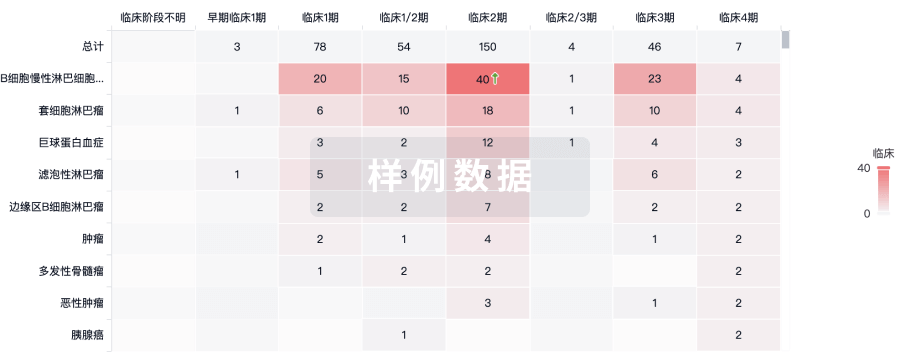
批准
利用最新的监管批准信息加速您的研究。
登录
或
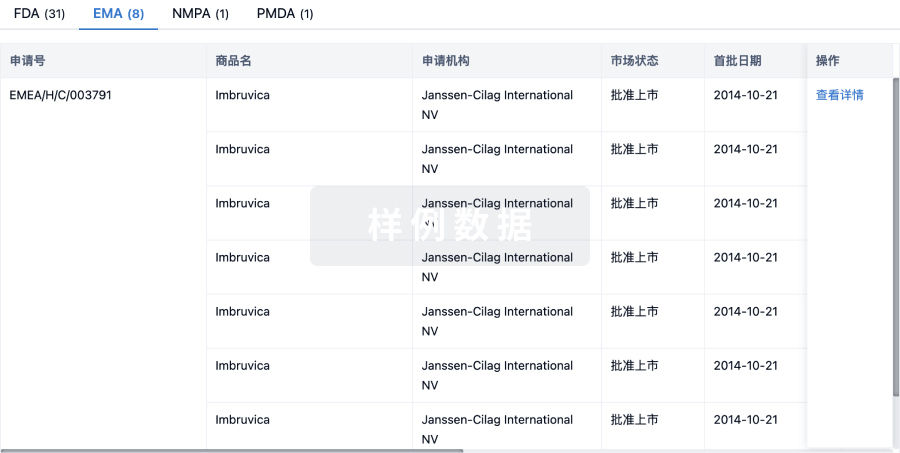
特殊审评
只需点击几下即可了解关键药物信息。
登录
或
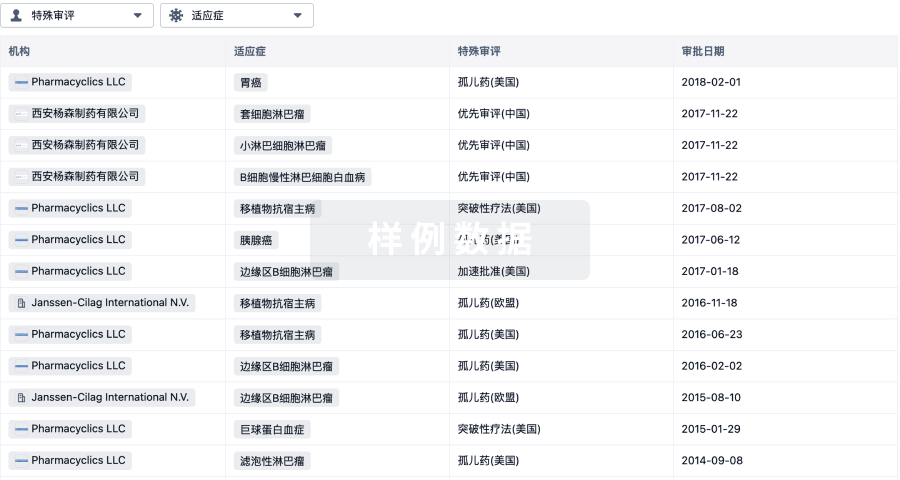
生物医药百科问答
全新生物医药AI Agent 覆盖科研全链路,让突破性发现快人一步
立即开始免费试用!
智慧芽新药情报库是智慧芽专为生命科学人士构建的基于AI的创新药情报平台,助您全方位提升您的研发与决策效率。
立即开始数据试用!
智慧芽新药库数据也通过智慧芽数据服务平台,以API或者数据包形式对外开放,助您更加充分利用智慧芽新药情报信息。
生物序列数据库
生物药研发创新
免费使用
化学结构数据库
小分子化药研发创新
免费使用

